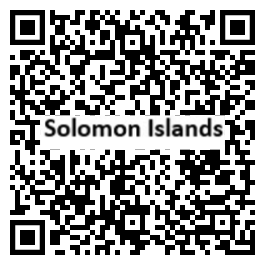Country Summary




Introduction
Background
The UK established a protectorate over the Solomon Islands in the 1890s. Self-government came in 1976 and independence in 1978. Ethnic violence, government malfeasance, endemic crime, and other issues undermined stability. From 2003 to 2017, the Australian-led multi-national Regional Assistance Mission to the Solomon Islands was generally effective in restoring law and order and rebuilding government institutions.
Geography
Area
total: 28,896 sq km
land: 27,986 sq km
water: 910 sq km
Climate
tropical monsoon; few temperature and weather extremes
Natural resources
fish, forests, gold, bauxite, phosphates, lead, zinc, nickel
People and Society
Population
702,694 (2022 est.)
Ethnic groups
Melanesian 95.3%, Polynesian 3.1%, Micronesian 1.2%, other 0.3% (2009 est.)
Languages
Melanesian pidgin (in much of the country is lingua franca), English (official but spoken by only 1%-2% of the population), 120 indigenous languages
Religions
Protestant 73.4% (Church of Melanesia 31.9%, South Sea Evangelical 17.1%, Seventh Day Adventist 11.7%, United Church 10.1%, Christian Fellowship Church 2.5%), Roman Catholic 19.6%, other Christian 2.9%, other 4%, unspecified 0.1% (2009 est.)
Population growth rate
1.72% (2022 est.)
Government
Government type
parliamentary democracy under a constitutional monarchy; a Commonwealth realm
Capital
name: Honiara
Executive branch
chief of state: King CHARLES III (since 8 September 2022); represented by Governor General David VUNAGI (since 8 July 2019)
head of government: Prime Minister Manasseh SOGAVARE (since 24 April 2019)
Legislative branch
description: unicameral National Parliament (50 seats; members directly elected in single-seat constituencies by simple majority vote to serve 4-year terms)
Economy
Economic overview
lower middle-income Pacific island economy; natural resource rich; primarily subsistent agriculture and fishing; land rights conflicts; fairly low public debt; underdeveloped financial sector; large, state-owned enterprise presence
Real GDP (purchasing power parity)
$1.71 billion (2020 est.)
Real GDP per capita
$2,500 (2020 est.)
Agricultural products
oil palm fruit, sweet potatoes, coconuts, taro, yams, fruit, pulses, vegetables, cocoa, cassava
Industries
fish (tuna), mining, timber
Exports
$430 million (2020 est.)
Exports - partners
China 65%, Italy 9%, India 6% (2019)
Exports - commodities
lumber, fish, aluminum, palm oil, cocoa beans (2019)
Imports
$560 million (2020 est.)
Imports - partners
China 24%, Australia 13%, South Korea 12%, Singapore 12%, Malaysia 10% (2019)
Imports - commodities
refined petroleum, fish, insulated wiring, broadcasting equipment, excavation machinery (2019)
Exchange rates
Solomon Islands dollars (SBD) per US dollar -
Page last updated: Tuesday, November 01, 2022
